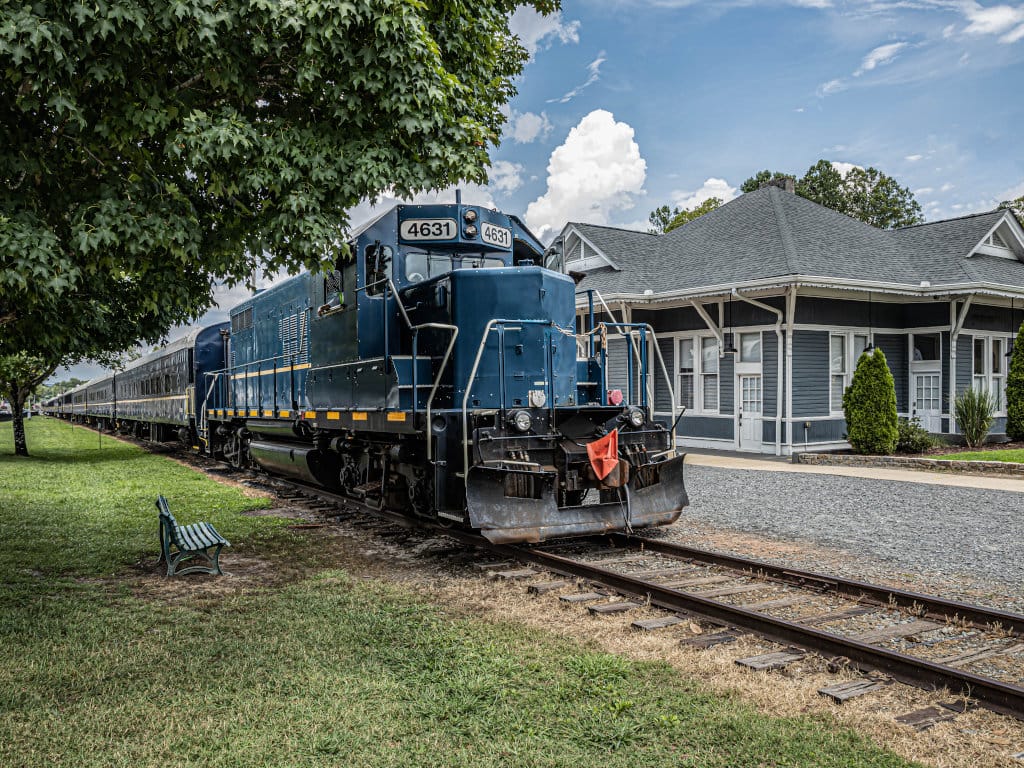Get ready to explore the enduring connection between trains and the Appalachian Plateau! We’ll uncover how these steel giants continue to shape the region’s economy. Join us on a journey through the mountains and valleys, discovering how trains remain a vital part of Appalachian life.
## The Appalachian Plateau: A History Shaped by Rails
The Appalachian Plateau, a region of rolling hills and deep valleys, has long relied on trains for its economic vitality. Rivers, while plentiful, were difficult to navigate, leaving the area isolated until the mid-1800s. That’s when railroads, particularly the Baltimore and Ohio Railroad, arrived, forever altering Appalachia’s destiny.
These railways unlocked the region’s potential, allowing its vast coal reserves to reach distant markets. Towns blossomed, populations surged, and coal became the lifeblood of the Appalachian economy. Trains, carrying not just coal but the promise of progress, fueled an era of unprecedented growth.
## Beyond Coal: The Modern Cargo of Appalachian Trains
While coal remains significant, trains now transport a diverse range of goods across the Appalachian Plateau:
* **Timber:** Towering trees from the region’s forests travel by rail to lumber mills and furniture manufacturers.
* **Manufactured Goods:** Factories dotting the landscape rely on trains to transport their products to consumers near and far.
* **Agricultural Products:** From fertile valleys, crops and livestock are loaded onto trains, connecting Appalachian farms to wider markets.
This shift reflects the region’s ongoing adaptation to a changing economic landscape, where reliance on a single resource is no longer sustainable.
## Overcoming Obstacles: How Trains Conquer Mountains
The Appalachian Mountains, with their steep grades and winding valleys, might seem like an insurmountable barrier to trains. However, ingenious engineering solutions have made it possible for these iron horses to conquer even the most challenging terrain.
Here’s how they do it:
* **Switchbacks:** Like a train playing a game of “snake,” switchbacks are zig-zagging sections of track that allow trains to ascend gradually.
* **Tunnels:** Boring straight through mountains creates a more direct path and reduces the steepness of the incline.
* **Rack Railways:** On exceptionally steep slopes, a toothed rail placed between the standard rails provides additional grip. A cogwheel on the locomotive engages with this toothed rail, offering the extra traction needed to climb.
* **Powerful Locomotives:** Specially designed locomotives generate immense pulling power, enabling them to haul heavy freight up mountain grades.
## The Future of Appalachian Trains: Challenges and Opportunities
The future of trains in Appalachia is at a crossroads, facing both challenges and opportunities:
* **Environmental Concerns:** The environmental impact of coal transportation and the need to minimize the footprint of rail infrastructure are ongoing concerns.
* **Modernization and Infrastructure:** Maintaining aging infrastructure and investing in modernization are crucial to ensuring the efficiency and safety of Appalachian railways.
* **Economic Diversification:** As the region’s economy evolves, finding new and innovative goods to transport will be essential for the long-term viability of Appalachian trains.
Despite these challenges, the spirit of innovation and adaptation that has long characterized Appalachia suggests a future where trains continue to play a vital role.
## Outperforming the Competition: Products of the Appalachian Plateau
The Appalachian Plateau is often associated with coal, but this vast region boasts a diverse array of products. Let’s delve into the resources that make the Appalachian Plateau an economic powerhouse.
### Natural Resources: A Wealth Beneath the Surface
* **Coal:** The Appalachian coalfields, among the largest in the United States, have long fueled the region’s economy. While facing challenges from environmental concerns and a shifting energy landscape, coal remains a significant resource.
* **Natural Gas and Petroleum:** Significant reserves of natural gas and petroleum offer potential for energy production, though extraction methods and environmental impact are important considerations.
* **Iron Ore and Limestone:** While iron ore production has declined, limestone remains abundant. Used in construction and manufacturing, it highlights the region’s diverse mineral wealth.
### Beyond Extraction: The Growing Diversity of Appalachian Products
* **Timber:** Vast forests blanket the Appalachian Plateau, providing lumber for construction, furniture making, and paper production. Sustainable forestry practices are crucial to ensuring this resource’s long-term viability.
* **Agriculture:** Fertile valleys within the mountains support a thriving agricultural sector. While tobacco has historically been a major crop, farmers are increasingly diversifying, with corn, hay, cattle, and poultry becoming more prevalent.
* **Manufactured Goods:** The Appalachian Plateau is home to a range of manufacturing industries. From wood products and metals to chemicals and textiles, these factories rely on trains to transport their goods to market.
* **Tourism and Recreation:** The region’s stunning natural beauty, from soaring mountains and lush forests to winding rivers, is a valuable resource in itself. Tourism is a growing sector, with visitors drawn to outdoor adventures like hiking, camping, fishing, and whitewater rafting.
### The Appalachian Plateau: A Future Forged in Innovation
The Appalachian Plateau faces a future shaped by both challenges and opportunities. Balancing economic growth with environmental stewardship will be crucial. By embracing diversification, investing in innovation, and harnessing the region’s unique assets, the Appalachian Plateau can build a sustainable future for generations to come.
- How many weeks is 40 days: Quick Conversion Guide for Accurate Results - March 31, 2025
- How many feet is 300 meters? 984 Feet: Understand Length Conversions Easily - March 31, 2025
- Senior at What Age: Benefits & Eligibility Guide - March 29, 2025

















1 thought on “Riding the Rails of Change: How Trains Still Deliver Goods to the Appalachian Plateau”
Comments are closed.